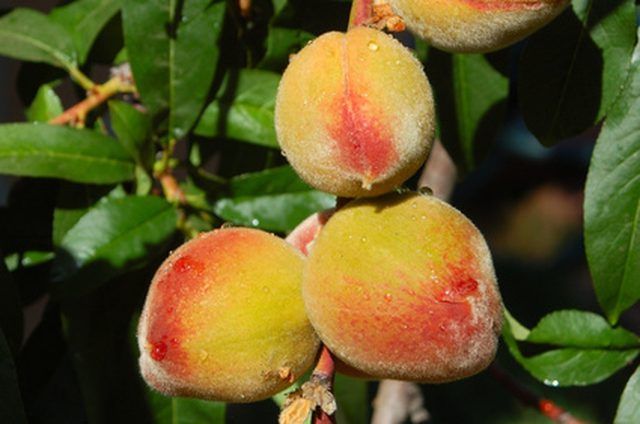Bulbs
Flower Basics
Flower Beds & Specialty Gardens
Flower Garden
Garden Furniture
Garden Gnomes
Garden Seeds
Garden Sheds
Garden Statues
Garden Tools & Supplies
Gardening Basics
Green & Organic
Groundcovers & Vines
Growing Annuals
Growing Basil
Growing Beans
Growing Berries
Growing Blueberries
Growing Cactus
Growing Corn
Growing Cotton
Growing Edibles
Growing Flowers
Growing Garlic
Growing Grapes
Growing Grass
Growing Herbs
Growing Jasmine
Growing Mint
Growing Mushrooms
Orchids
Growing Peanuts
Growing Perennials
Growing Plants
Growing Rosemary
Growing Roses
Growing Strawberries
Growing Sunflowers
Growing Thyme
Growing Tomatoes
Growing Tulips
Growing Vegetables
Herb Basics
Herb Garden
Indoor Growing
Landscaping Basics
Landscaping Patios
Landscaping Plants
Landscaping Shrubs
Landscaping Trees
Landscaping Walks & Pathways
Lawn Basics
Lawn Maintenance
Lawn Mowers
Lawn Ornaments
Lawn Planting
Lawn Tools
Outdoor Growing
Overall Landscape Planning
Pests, Weeds & Problems
Plant Basics
Rock Garden
Rose Garden
Shrubs
Soil
Specialty Gardens
Trees
Vegetable Garden
Yard Maintenance
How to Grow Peach Trees in Ohio
How to Grow Peach Trees in Ohio. Hardy to zone 5, peach trees have a life expectancy of 20 years and grow to heights of 15 feet at maturity. Closely related to plums, cherries and apricots, peach trees originated in China, eventually arriving in the U.S. in 1629. Peach trees are self-pollinating, and established peach trees will begin to bear fruit...

Hardy to zone 5, peach trees have a life expectancy of 20 years and grow to heights of 15 feet at maturity. Closely related to plums, cherries and apricots, peach trees originated in China, eventually arriving in the U.S. in 1629. Peach trees are self-pollinating, and established peach trees will begin to bear fruit two to three years after planting. If you live in Ohio, which is within USDA hardiness zones 5 and 6, you can grow a peach tree in your backyard that will eventually yield you a 30- to 50-lb. harvest.
Things You'll Need
Peach seed
Paper plate
Soil pH testing kit
Pitchfork
Lime
Peat moss
Soaker hose
Mulch
Tomato cage
Bamboo stake
Pantyhose
Fertilizer
Pruning shears or pruning saw
Remove the peach seed from the raw fruit. Rinse the seed in clear water and remove any attached pulp. Peach seeds require stratification, and fall planting, along with the winter frost, will provide the chill that the peach seed needs.
Choose an area that contains full sun and well-drained soil. Peach trees prefer to grow in soil with a pH between 6.0 and 7.0, and Ohio soil tends to be neutral to alkaline. Test your soil to determine its acidity. Use a soil pH test purchased from a nursery or garden center.
Break up the soil with a pitchfork and add the required amendment. If the soil pH test measures below 6.0, add lime. For a pH above 7.0, add peat moss. Mix in either amendment according to manufacturer's instructions.
Sow the peach seed in the soil at a 1/2-inch depth and gently pat the soil over top. Place a 8-by-8-inch piece of metal screening over the planting spot and lay a heavy stone on each corner to hold it down. The screening will keep the peach seed safe from hungry Ohio squirrels and other forms of wildlife.
Water the planting area thoroughly using a soaker hose. Provide the soil with 1 inch of water per week, maintaining moisture at a depth of 1 inch at all times. Discontinue watering during the winter if there is snow on the ground or periods of heavy rainfall. Resume watering after the winter thaw.
Apply a 4-inch layer of mulch after planting the peach tree seed. Covering the seed with straw, pine or bark chips will help with drainage and also help to protect the peach seed from the cold Ohio winters. Maintaining a layer of mulch over the planting site will help to reduce weed growth during the growing season.
Place a tomato cage around the peach tree when the seed begins to germinate in the spring. The tomato cage will protect the young seedling from Ohio wildlife. Remove the cage when the peach tree sapling reaches a height of 1 foot. Hammer a bamboo stake into the ground and attach the peach tree to the stake with a piece of cut pantyhose. The pantyhose will not mar the sapling's outer wood.
Tips & Warnings
Apply a slow-release fertilizer as the peach tree grows. Follow the packaging instructions for allocation amounts and time frames.
Prune the tree heavily with a pair of pruning shears or a pruning saw during its winter dormancy. Peaches will only grow on the previous year's growth, so removing the old wood will help the peach tree generate more energy into fruiting during the coming year.
Harvest the peaches when they ripen; usually during mid-August.
If you notice a pest infestation on your peach tree, or any signs of disease, contact a skilled arborist that can help save your tree.
Do not over-water the peach tree. Standing water will cause root rot, which can kill the tree. It can also cause fungal diseases. Check the soil before watering. If it feels moist 1 inch down, skip the watering and check back in a few days.